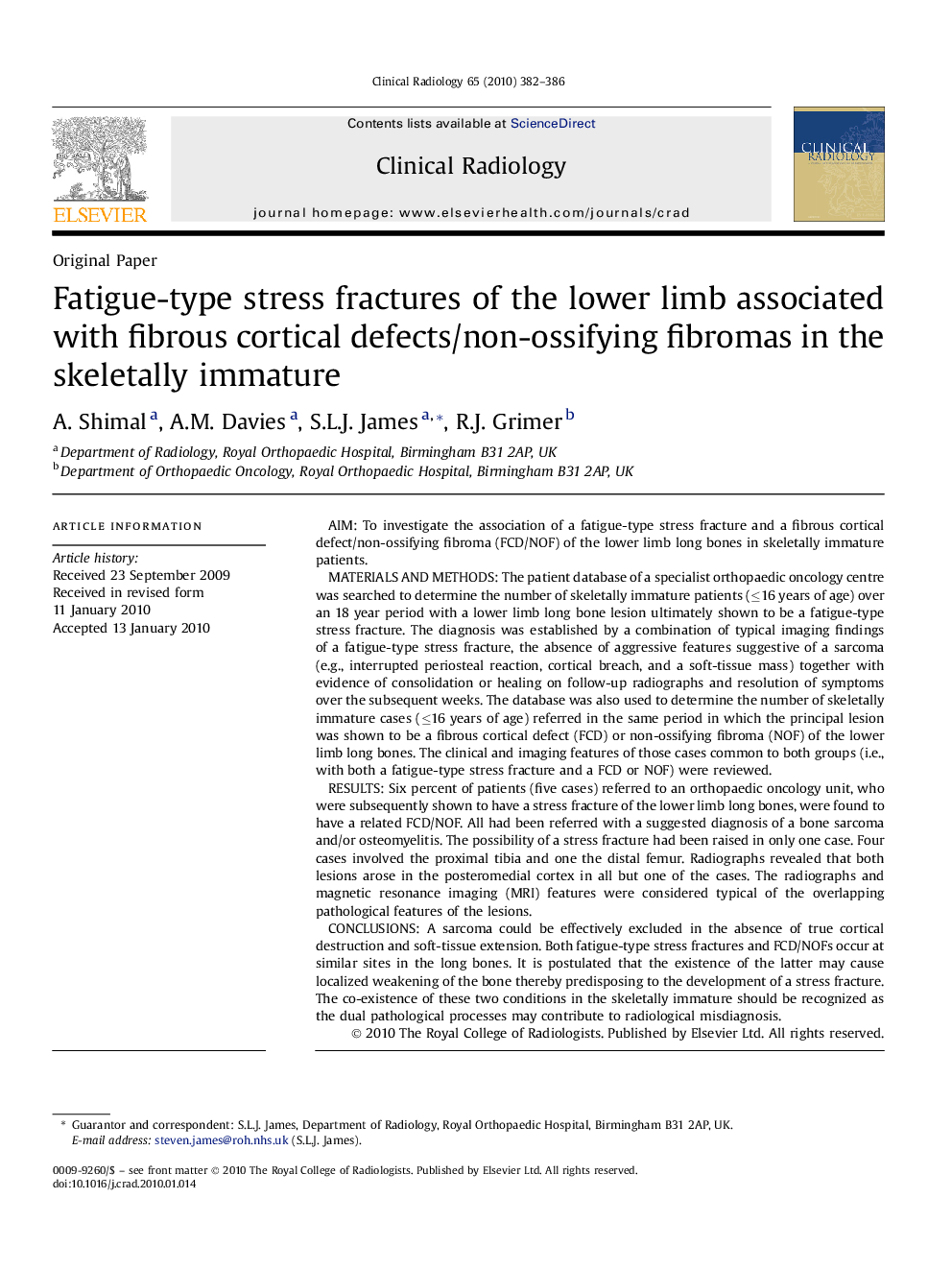| Article ID | Journal | Published Year | Pages | File Type |
|---|---|---|---|---|
| 3982534 | Clinical Radiology | 2010 | 5 Pages |
AimTo investigate the association of a fatigue-type stress fracture and a fibrous cortical defect/non-ossifying fibroma (FCD/NOF) of the lower limb long bones in skeletally immature patients.Materials and methodsThe patient database of a specialist orthopaedic oncology centre was searched to determine the number of skeletally immature patients (≤16 years of age) over an 18 year period with a lower limb long bone lesion ultimately shown to be a fatigue-type stress fracture. The diagnosis was established by a combination of typical imaging findings of a fatigue-type stress fracture, the absence of aggressive features suggestive of a sarcoma (e.g., interrupted periosteal reaction, cortical breach, and a soft-tissue mass) together with evidence of consolidation or healing on follow-up radiographs and resolution of symptoms over the subsequent weeks. The database was also used to determine the number of skeletally immature cases (≤16 years of age) referred in the same period in which the principal lesion was shown to be a fibrous cortical defect (FCD) or non-ossifying fibroma (NOF) of the lower limb long bones. The clinical and imaging features of those cases common to both groups (i.e., with both a fatigue-type stress fracture and a FCD or NOF) were reviewed.ResultsSix percent of patients (five cases) referred to an orthopaedic oncology unit, who were subsequently shown to have a stress fracture of the lower limb long bones, were found to have a related FCD/NOF. All had been referred with a suggested diagnosis of a bone sarcoma and/or osteomyelitis. The possibility of a stress fracture had been raised in only one case. Four cases involved the proximal tibia and one the distal femur. Radiographs revealed that both lesions arose in the posteromedial cortex in all but one of the cases. The radiographs and magnetic resonance imaging (MRI) features were considered typical of the overlapping pathological features of the lesions.ConclusionsA sarcoma could be effectively excluded in the absence of true cortical destruction and soft-tissue extension. Both fatigue-type stress fractures and FCD/NOFs occur at similar sites in the long bones. It is postulated that the existence of the latter may cause localized weakening of the bone thereby predisposing to the development of a stress fracture. The co-existence of these two conditions in the skeletally immature should be recognized as the dual pathological processes may contribute to radiological misdiagnosis.
